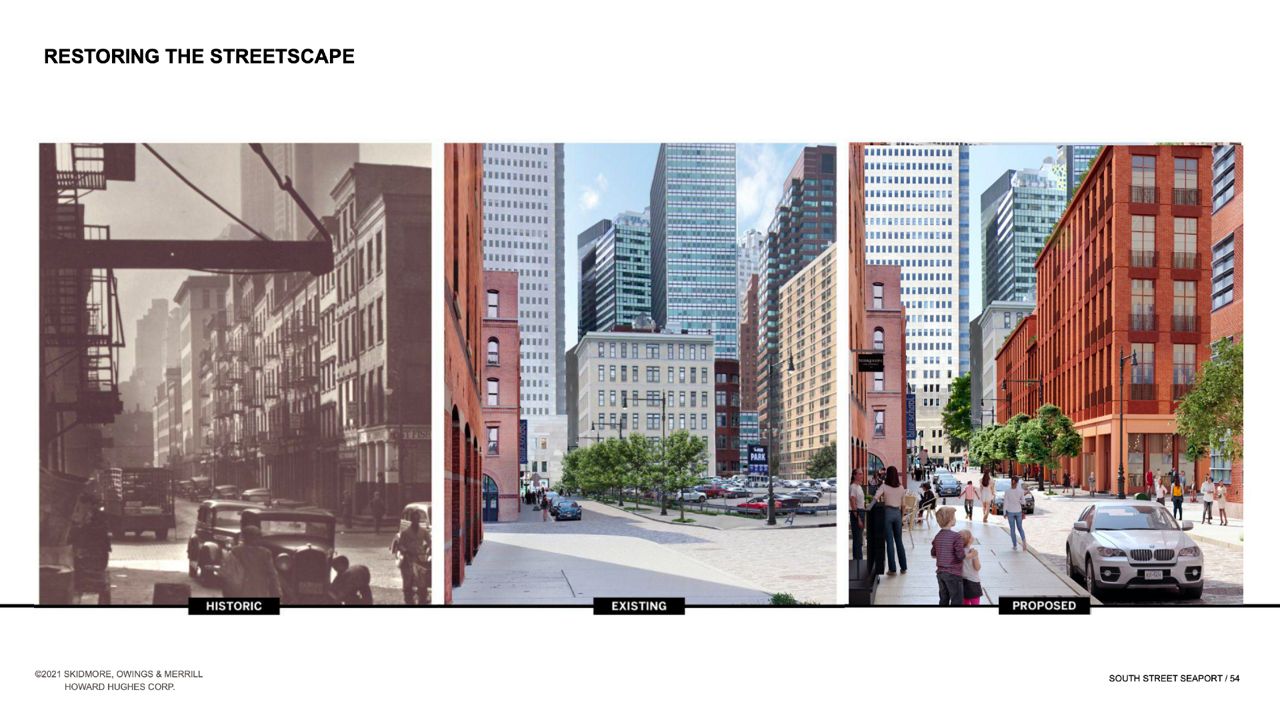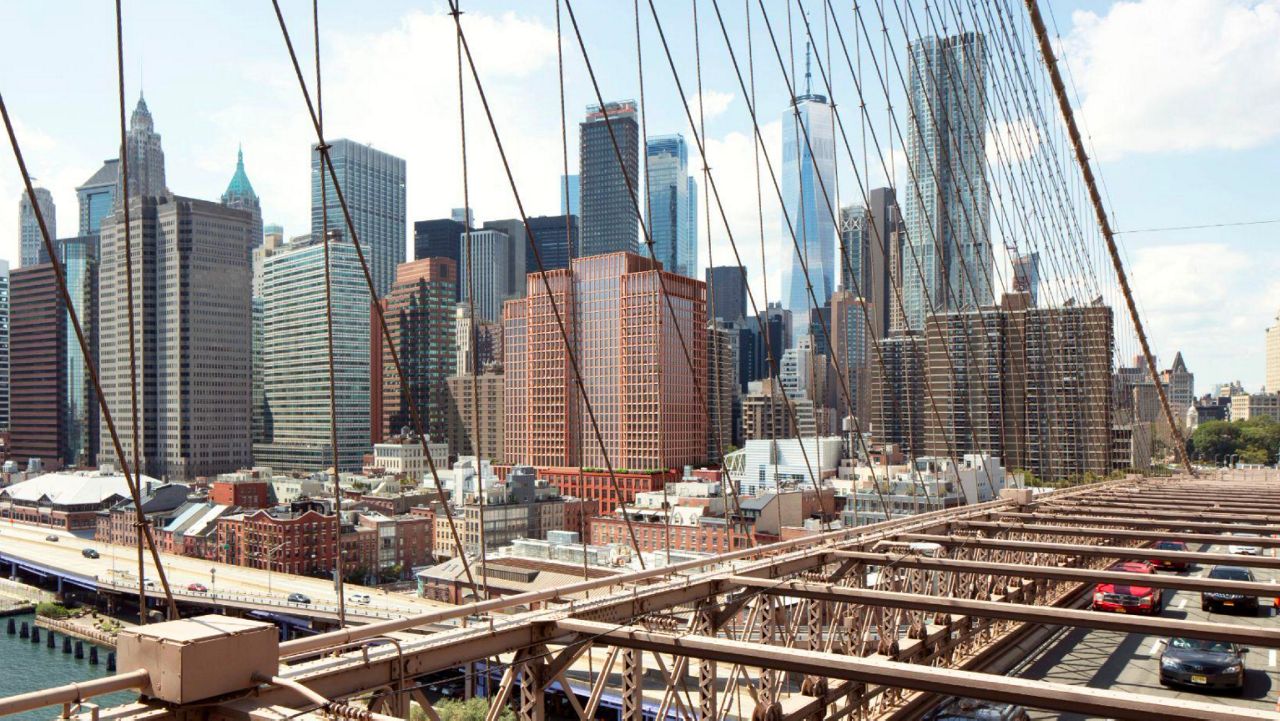City landmarks commissioners approved a plan to replace a 50-year-old parking lot between Water and Pearl streets in downtown Manhattan with a brick and stone tower on Tuesday, pushing forward a controversial design that would bring an influx of residential units to the South Street Seaport Historic District.
The site, long considered an eyesore next to the 200-plus-year-old Federal and Georgian style brick buildings of the Seaport, has seen competing proposals for decades from development groups, community organizations and cultural institutions, all with the stated goal of preserving the area’s unique character.
The proposed tower, from the Howard Hughes Corporation, a Texas-based development firm, would bring in hundreds of residential units, including 70 designated as “affordable.” It also includes an endowment for the South Street Seaport Museum, which anchors the area to its maritime history, but has been struggling financially for decades.
What You Need To Know
- The city's landmarks commissioners voted Tuesday to approve a residential tower to replace a parking lot in the South Street Seaport Historic District
- The project is the first proposal to win the commissioners' approval after decades of attempts from developers and community groups
- Politicians and business groups support the plan, but some are concerned that the tower sets a precedent that would see tall buildings proliferate in historic districts around the city
The Landmarks Preservation Committee voted 6-2 to approve the project a month after the committee members told the developers to alter their designs — again — to bring the building more in line with the character of surrounding buildings, which top out around five stories.
The new designs reduced the overall height of the building’s residential tower, which rises over Water Street, from 345 to 324 feet, and adjusted the facade and height of the base of the building running along cobblestoned Beekman Street on the Seaport side.
Commissioners who voted in favor of the project praised subtle changes to the building’s facade, noting that landmark law does not allow them to consider the height of the building in whether it appropriately conforms to the aesthetic of the surrounding historic area.
The building “now has a much better relationship and dynamic with the buildings around it,” Jeanne Lutfy, one of the commissioners, said. “And I believe it is much more sensitive to the district’s scaled proportions and materiality.”
Commissioners Michael Goldblum and John Gustafsson opposed the project, saying the updated design did not reflect their concerns. Gustafsson praised the building’s Seaport-facing base, but decried the height of the tower, calling its design “Lego-esque.”
“We are supposed to vote in favor of this proposal because it is better than a parking lot and better than Legoland,” Gustafsson said. “That’s not the standard for appropriateness.”

The vote comes after months of pitched battle over the design, which has changed — and shrunk — dramatically during the commission’s review, including going from two towers to one. Instead of the initially proposed 360 units, the new design has 270 units over 25 stories. Of those, 70 will be deemed “affordable,” with an average cap on area median income of 40%, according James Yolles, a spokesperson for the Howard Hughes Corporation. The area median income for the area around the proposed tower is about $96,000, according to data compiled by the Citizens Committee for Children of New York.
The firm originally proposed a $50 million endowment for the Seaport Museum, but in an email Yolles said that the final amount would be determined in the upcoming land-use process.
The commission had seen more than 15 hours of testimony and presentations on the site before Tuesday morning, as well as hundreds of letters in favor and opposed.
Earlier this year, the project won the approval of Manhattan Borough President Gale Brewer and City Council Member Margaret Chin, who represents the area. They released a joint statement Tuesday supporting the commission’s approval of the project.
Saul Scherl, the regional president for the Howard Hughes Corporation, praised the commission’s approval in an emailed statement, saying that the project “will play a vital role in New York City's inclusive post-pandemic economic recovery.”
Jessica Lapin, the president of the Alliance for Downtown New York, the Financial District’s business improvement district, said that the latest designs showed that the developers were being responsive to the commission’s concerns.
“This will really take what has been a blight on the neighborhood, really, and transform it into something positive and save the Seaport at the same time,” she said.
Yet opponents of the project decried the commission’s decision as potentially setting a precedent that would allow tall towers to be built in historic areas.
“I think I heard cash registers ringing as soon as the decision was laid down,” said Megan Malvern, a member of the Seaport Coalition, a group that opposes the Howard Hughes Corporation’s proposed tower, and a resident of the area for 15 years. “As long as you can come in with enough other bells and whistles, you can ignore all of the precedent and the law that has protected these really important places for so long.”
The project still has to go through the city’s Unified Land-Use Review Process, though the spokesperson for Hughes said that the project is not seeking a zoning change, which typically invites strong community engagement.








